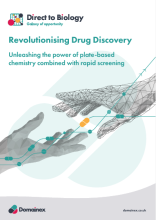- About
-
Solutions
-
Services
- Biosciences
- Chemistry
- Integrated Drug Discovery
- Computer Aided Drug Design
- Hit Identification
- Target Classes and Modalities
- Therapeutic Areas
-
A-Z
- A
- B
- C
- D
- E
- F
- G
- H
- I
- K
- L
- M
- N
- O
- P
- R
- S
- T
- V
- X
-
Services
- Library
- News & Events
- Careers
Direct-to-Biology (D2B)
Discovering a Galaxy of Opportunity - Unleashing the power of plate-based chemistry combined with rapid screening

Unleash the full potential of our D2B expertise on your drug discovery project.
Whatever the modality of your project, whether it’s Targeted Protein Degradation (TPD), covalent fragments, or small molecule inhibition, supercharge your hit-to-lead (H2L) or lead optimisation (LO) programmes today with Direct-to-Biology!
Benefits of Direct-to-Biology (D2B) in Drug Discovery
Drug discovery is a complex and time-consuming process that requires the seamless integration of multiple disciplines and technologies. D2B has revolutionised the field by combining ‘plate-based chemistry’ with rapid in-house biological screening of crude compounds, with key benefits:
- Speed: Synthesis and screening of hundreds of compounds per week with just a single FTE, to generate Structure-Activity Relationships (SAR) a whole lot faster
- Reduced cost of reagents: Our D2B platform uses just 250 nanomoles of reagent per target compound, reducing the cost and environmental impact compared to traditional synthesis
- Bespoke libraries: Rapid synthesis of a tailor-made library of compounds for your target to give you an edge in patent space, when compared to commercial “hit-finding” libraries.
Additionally, Domainex has a partial PROTAC® toolbox available which can be used in conjunction with D2B for the rapid synthesis of PROTACs.
(PROTAC® is a registered trademark of Arvinas Operations, Inc., and is used under license)
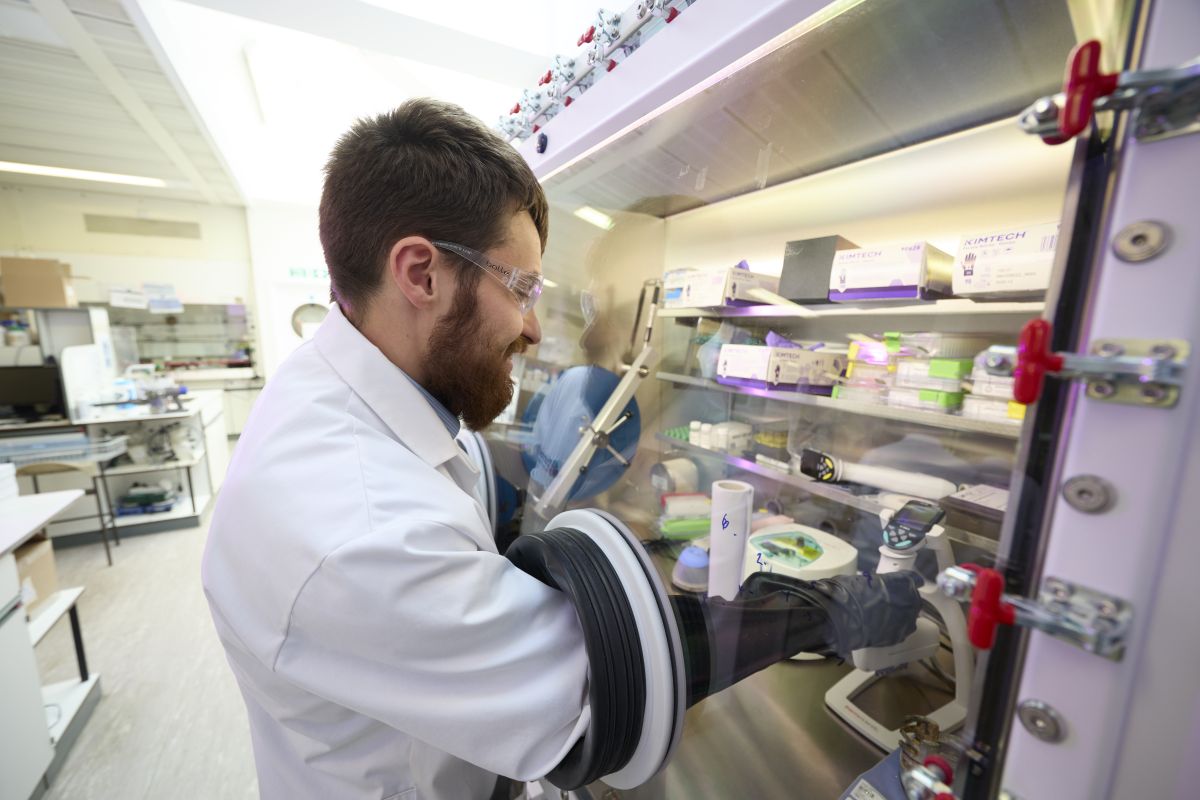
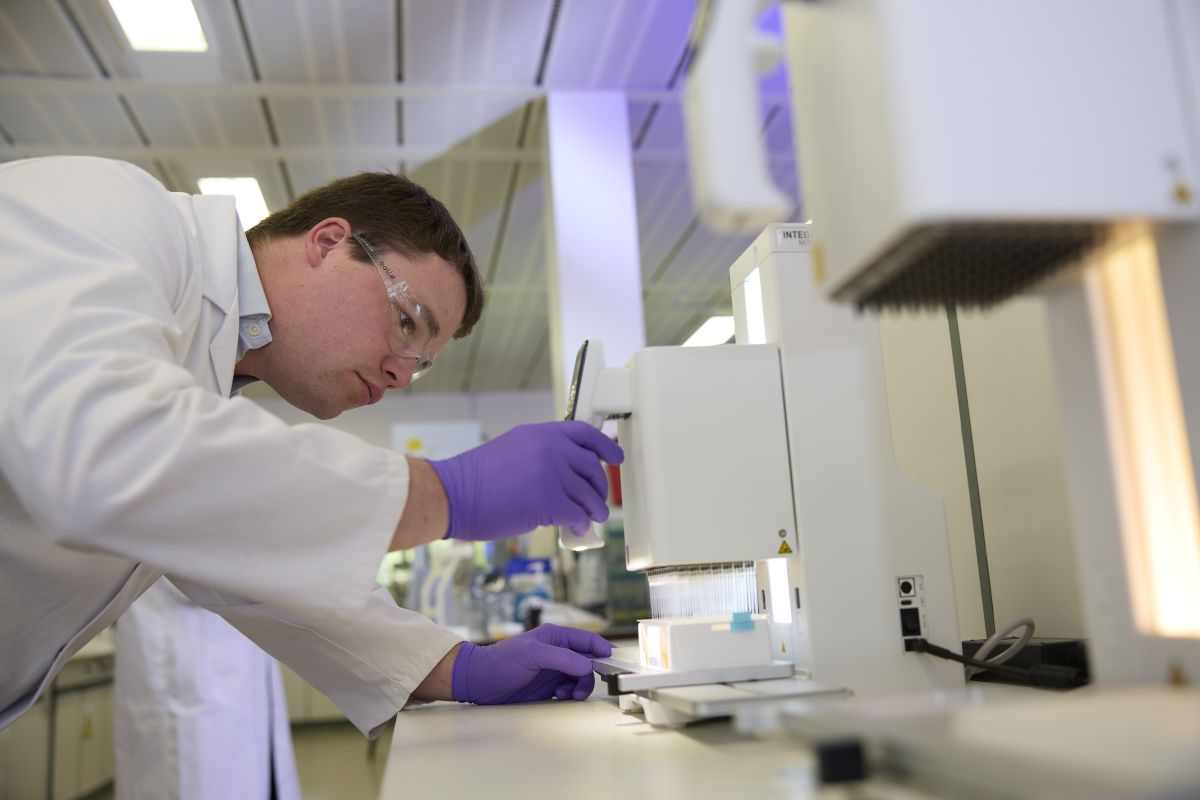
Which Chemistry? Which Programme?
Early publications that described the Direct-to-Biology approach used amide couplings for Targeted Protein Degraders (TPDs). However, the field has only continued to grow since then. Multi-step transformations, and palladium catalysis, are now well precedented in the literature and by Domainex. It’s not just TPDs either: covalent and reversible fragments, molecular glues and traditional small-molecule programmes have all been described now.
Speak to our experts to find out how a personalised D2B campaign can accelerate your programme, and take advantage of:
- Expert computationally guided library design using molecular modelling and in silico property predictions
- Customised assay development by our team of highly skilled biologists
- Rapid synthesis and SAR generation by our D2B chemistry experts
- Generation of further data on your molecules in addition to bioactivity data including measurement of early druglike properties such as chromatographic LogD (ChromLogD) and EPSA - from the same screening sample
D2B Compatibility Tests
We are proud of our rigorous D2B workflow which has a focus on ensuring quality, as well as speed. That’s why each of our D2B campaigns begin with a compatibility test to ensure we achieve a robust data set, before embarking on the D2B synthesis.
To assist in the selection of the right assay technology for your programme, we’ve tested commonly used techniques to get an early insight that goes beyond the available literature (Table 1).
Table 1. Assessment of the compatibility of different D2B reactions with different assay formats (NT = not tested, CuAAC = Copper Catalysed Azide-Alkyne Cycloaddition).

Our Case Studies
Our drug discovery follows the data, and our case studies in Direct-to-Biology lead the way globally:
- Using our Partial PROTAC toolbox: Targeted Protein Degrader Toolbox
- Fast fragment follow up for Adenosine A2a: Using Direct-to-Biology in a Spectral Shift-PoLiPa Platform to Enable Fast Fragment Follow-Up for Adenosine A2a Antagonists
- D2B enabled covalent fragment screening: case study coming soon
Domainex’s D2B Workflow
Up to 384 compounds can be generated in a single plate and screened using the workflow below:
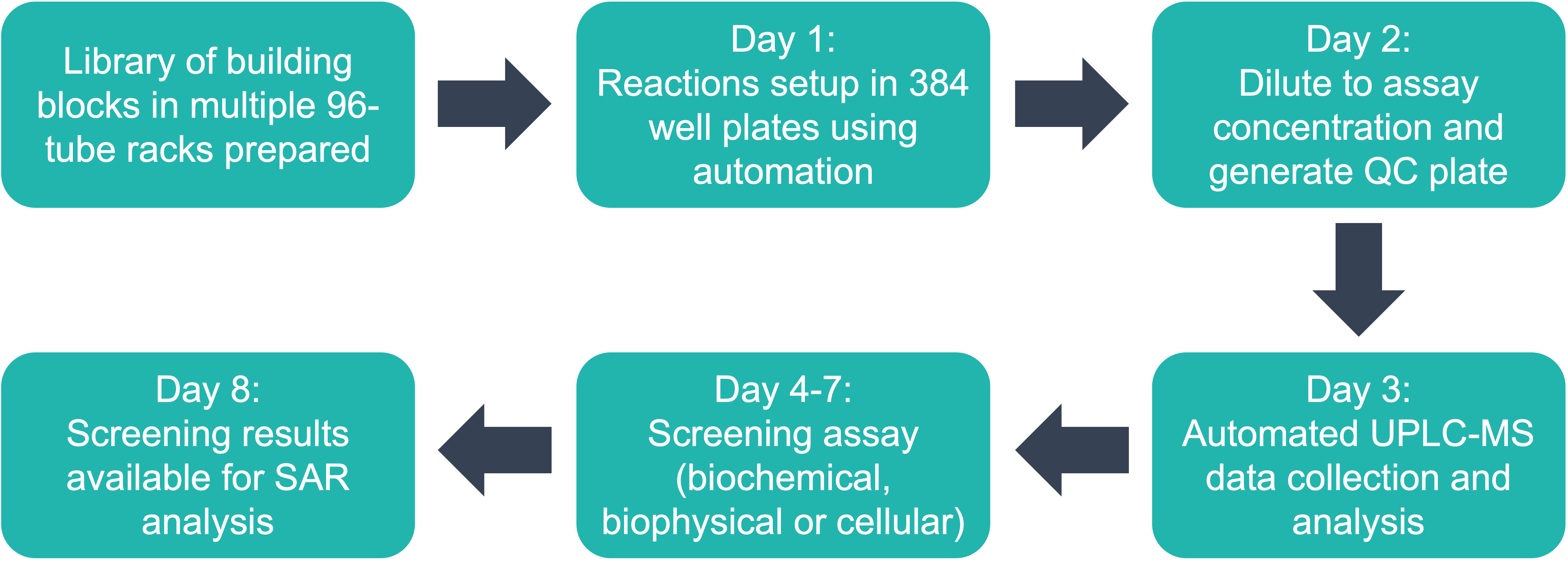
- Plate-based reaction optimisation is undertaken prior to D2B to ensure workflow efficiency and to minimise reagent usage.
- Utilising this process, 1,000s of compounds can be synthesised and screened in less than 1 month
- Automated QC and analysis, using UPLC MS, is conducted to allow a heat-map overview to be produced to assess the quality of each plate (see Figure 1)
- Hits can be observed even when a relatively low sample purity is observed.
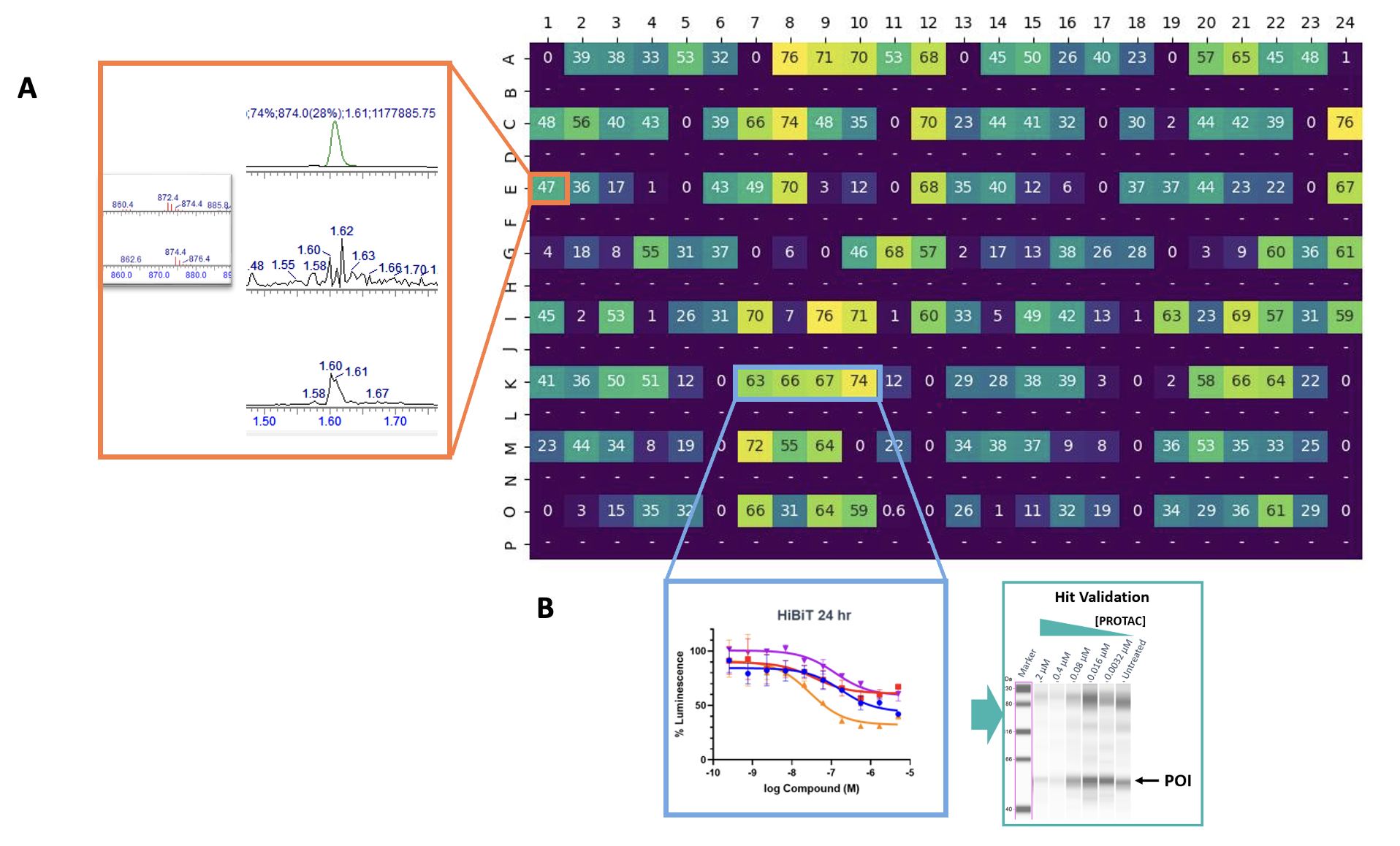
Figure 1. Automated QC analysis & evaluation in degradation assays. (A) A heat map of compound purity (automated UPLC-MS) generated by PyParse, (B) D2B assay readout for 4 compounds; levels of cellular protein degradation (Nano-Glo®) and automated Western blotting showing concentration dependent TPD.
D2B combines plate-based chemistry with rapid screening, synergistically enhancing the efficiency and success of drug discovery. These methods allow researchers to explore rapidly chemical space, identify hits, validate their biological activity, gain early insights into mechanism of action and asses the ADME properties, ultimately streamlining the development of novel and effective therapeutics. By embracing these cutting-edge techniques, Domainex will accelerate your drug discovery programmes and help you to bring life-changing medicines to patients more efficiently and effectively.
Download the Brochure
Unleash the full potential of our D2B expertise on your drug discovery project. Whether it’s to enable your Targeted Protein Degrader project or supercharge your hit-to-lead or lead optimisation programmes, Direct-to-Biology will open up a galaxy of opportunity for you!
Start your next project with Domainex
Contact one of our experts today